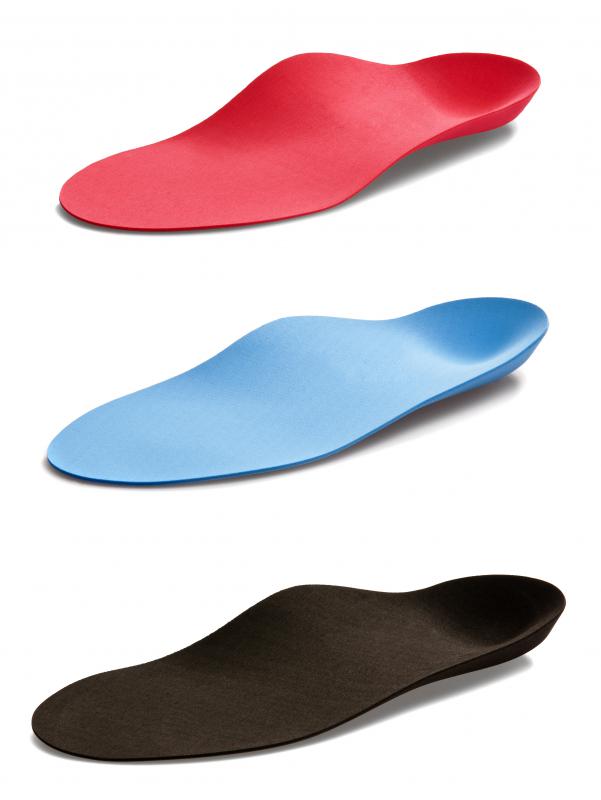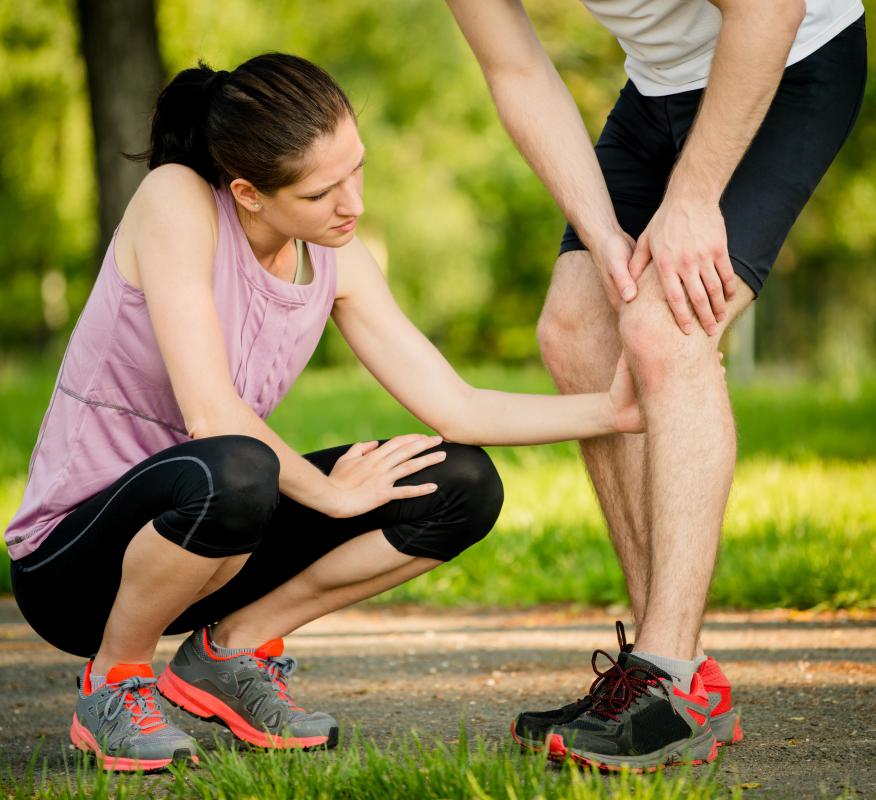At WiseGEEK, we're committed to delivering accurate, trustworthy information. Our expert-authored content is rigorously fact-checked and sourced from credible authorities. Discover how we uphold the highest standards in providing you with reliable knowledge.
How do I get Rid of Shin Splints?
The first step in your quest to get rid of shin splints is to understand what they are—stabbing pains in the lower leg when running or doing another high-impact workout. This way you can avoid them. There are some simple home treatments that can help get you back on your feet again. If you are not sure that what you are experiencing is shin splints, you should see a doctor, as the pain you feel may be caused by other muscle, bone, or connective tissue injuries.
Most people who run experience shin splints from time to time. Before you begin your workout, make sure that your muscles are properly warmed up and stretched. If you have recurring shin splints, you may need to practice exercises that add strength and flexibility to your lower legs. The best way to get rid of shin splints is to avoid them in the first place.

A good pair of running or cross training shoes is a key component of your exercise regimen. If your shoes are old or not designed for a high-impact workout, they can cause you pain. Just like the tires on your car, running shoes have a limited number of miles or kilometers before the cushion and tread fail. You may also find that you need gel insoles or orthotic inserts to get rid of shin splints. This is especially true if you have flat feet.

You may experience shin splints when you first start working out or change your workout routine. You can get rid of shin splints by examining your regimen to make sure it's right for you. These twinges of pain often occur during running or intense workouts on hard or inclined surfaces. You may select a softer surface such as a running track or a treadmill to ease the pain. Take some time to let your shins recover before returning to the activities that have been causing you pain.

During your resting period, you may still work out, but you should engage in low-impact activities to encourage your shins to heal. Ice the affected area for 20 to 30 minutes every few hours during the first few days after injury. Once that time has passed, switch to applying heat at the same intervals. The pain should go away within about a week. When the pain subsides, you can return to your normal routine, but be careful to ease into a more challenging workout.

Some over-the-counter medications can help you get rid of shin splints. Choose from any non-steroidal pain reliever such as aspirin, ibuprofen, or acetaminophen that you may have at home. Some topical ointments and creams can help ease the pain of shin splints and encourage your recovery. Be careful not to use medications to mask the pain of your shin injury. You should take it easy while the wounds heal.

It is possible that the pain you are feeling is caused by a condition other than shin splints. If the pain is very intense or onsets suddenly with no changes in your workout regimen, you may have suffered a stress fracture in your tibia. If you notice bruising, swelling, or unexplained bumps, or if the symptoms don't go away within two weeks of home treatment, you should make an appointment to see your doctor.
AS FEATURED ON:
AS FEATURED ON:


















Discussion Comments
@browncoat - Have you had a look at your shoes? Because I've found that they are the most significant factor when it comes to getting shin splints when I'm running. It's not always how expensive they are either. I know I overpronate and I need to get a stable shoe in order to run without pain.
The best running shoes for shin splints are going to depend on what kind of foot you've got. If you can figure that out, you can figure out how to get cheap versions of it, rather than getting high end sports shoes every time.
@Fa5t3r - You don't even have to push yourself to the point of pain. I've found that as long as I keep up exercise in general, and stretching for my legs, then I don't tend to get shin splints when I run, even if I haven't run in a while.
I absolutely hate shin splint pain though, so I will stop as soon as I feel even a hint of it. I find that massage can help a little bit, but I always make sure to take a couple of Ibuprofen as well.
One important thing to remember about shin splints is that they are an inflammation of the tissues, so there's no point in trying to get rid of them by continuing your workout once they start. You're just going to irritate your legs even more and make it worse. Even if they don't hurt that much, you have to stop.
I've found that the secret is to push to the point where you know they are about to start hurting and then slow down. Once they do start hurting, they aren't going to stop until you have a long rest. But if you can keep them at the point before the pain starts, they will get stronger each time.
It does take a long time to build them up, but it's worth it. Eventually you get to the point where they don't hurt at all. But then you've got to maintain that level of fitness, because if you slack off, they will be the first thing to go.
Post your comments